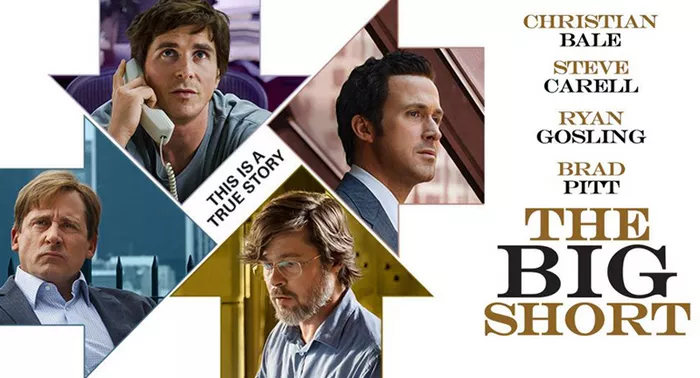The Big Short, directed by Adam McKay and based on Michael Lewis’s book of the same name, presents a gripping dramatization of the events leading up to the 2008 financial crisis. While the film aims to capture the essence of the crisis and its complexities, it also takes creative liberties to enhance its narrative impact. Here, we delve into eight significant changes made to the movie’s portrayal of the financial crisis, highlighting where fact diverges from fiction.
1. Names and Characters: Merging Reality with Dramatics
One of the most noticeable changes in the film is the renaming and slight alteration of key characters. While the real-life protagonists include Michael Burry, Steve Eisman, and Greg Lippmann, the movie replaces their names with Mark Baum, Steve Carell’s portrayal of Eisman, and Jared Vennett respectively. This creative decision blends reality with dramatic effect, simplifying the viewer’s connection to the characters while underlining their distinct personas.
2. Dramatized Threats: The Overplayed Collapse of Morgan Stanley
In an effort to intensify tension and add an element of impending doom, the movie magnifies the threat of Morgan Stanley collapsing. While the financial crisis did pose significant risks to major financial institutions, the film embellishes the danger faced by Morgan Stanley for dramatic flair. This heightened portrayal exaggerates the stakes, drawing the audience deeper into the narrative but not without departing from the actual extent of the risk.
3. Oversight and Omission: The Absence of Fannie Mae and Freddie Mac Corruption
While the film meticulously dissects the housing bubble and the actions of investment banks, it sidesteps the alleged corruption and malpractices within Fannie Mae and Freddie Mac, two prominent federal mortgage institutions. These institutions played a substantial role in the housing crisis, and their omission in the film can be viewed as a missed opportunity to provide a more comprehensive view of the crisis’s origins.
4. Downplaying Lehman Brothers: A Lessened Collapse
Lehman Brothers’ collapse marked a pivotal moment in the financial crisis, yet the film doesn’t allocate it the same level of emphasis. The actual impact of Lehman Brothers’ bankruptcy on the crisis is arguably downplayed in the movie, perhaps to maintain a smoother narrative flow and prevent overwhelming the audience with too many interwoven stories of collapse.
5. Simplified Explanations: Breaking Down Complex Financial Jargon
Given the intricate and convoluted nature of the financial crisis, the film simplifies complex financial jargon to make it more accessible to a wider audience. While this simplification aids comprehension, it does risk oversimplifying certain concepts, potentially leading to a less precise understanding of the crisis’s intricacies.
6. Fictional Characters and Their Roles: The Strippers and the Casino Manager
Incorporating fictional characters, such as the strippers explaining mortgage-backed securities and the casino manager analogy, the film takes creative liberties to engage the audience and elucidate complex financial concepts. These characters serve as relatable guides through the dense financial landscape, although their absence in real life highlights the film’s willingness to blend fact and fiction.
7. Speed of Events: Condensed Timelines for Cinematic Flow
To maintain a compelling pace and ensure viewer engagement, the film condenses the timeline of events leading up to the crisis. While this helps streamline the narrative, it can potentially create a misconception that the crisis unfolded rapidly, overlooking the gradual buildup of unsustainable financial practices over several years.
8. Emotional Impact: Amplifying Personal Struggles
The movie underscores the personal struggles and ethical dilemmas faced by the protagonists, humanizing the crisis and adding emotional depth. While these struggles indeed occurred, their portrayal might be heightened for cinematic effect, potentially altering the perception of the protagonists’ motives and experiences.
In conclusion, The Big Short artfully brings to life the intricate web of events leading to the 2008 financial crisis, but it does so by taking creative liberties that sometimes deviate from historical accuracy. While these changes enhance the film’s entertainment value and narrative coherence, they also underscore the delicate balance between storytelling and accurately portraying complex real-world events. As viewers, it’s crucial to approach such adaptations with a critical eye, recognizing the nuances where reel diverges from the real.
RELEATED READING:
-
New Netflix Movie Creates A Surprising Link Between Wednesday’s Jenna Ortega & Emma Myers
-
Puppy Love 2: If It’s Happening, Possible Story & Everything We Know
-
Unleashing Fury: The Equalizer 3’s R-Rating Explained
-
Rocket Raccoon’s Transformative Journey: Unveiling the Healing Arc
-
Pirates of the Caribbean 6: When It Might Release, Johnny Depp’s Return & Everything We Know

